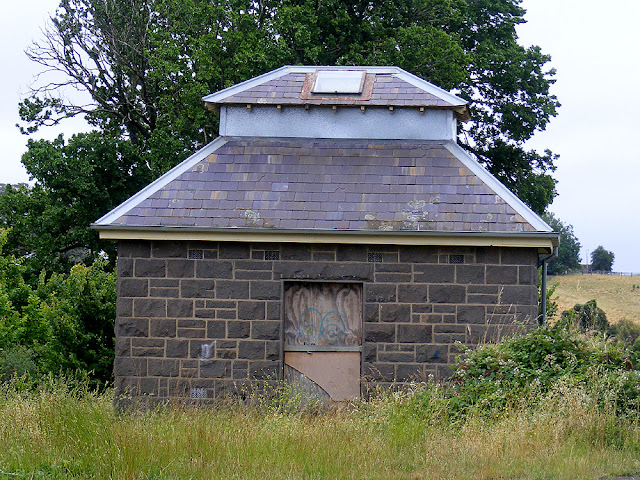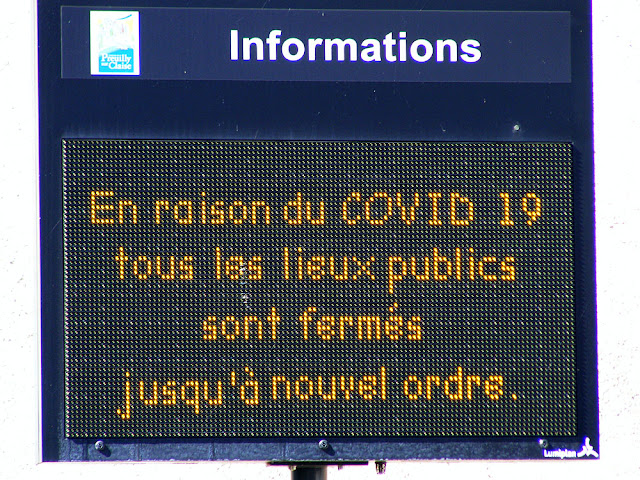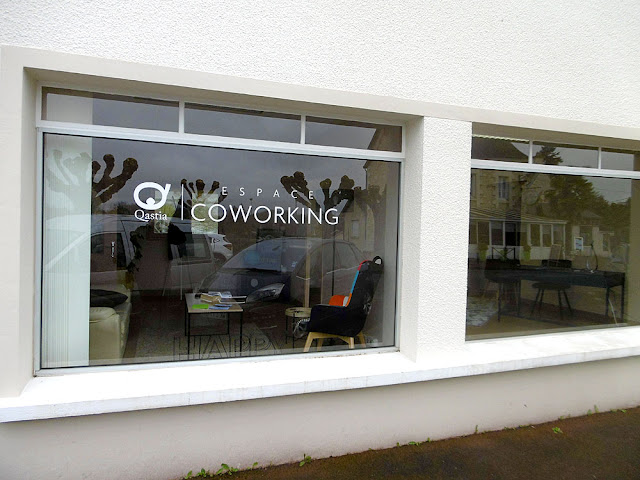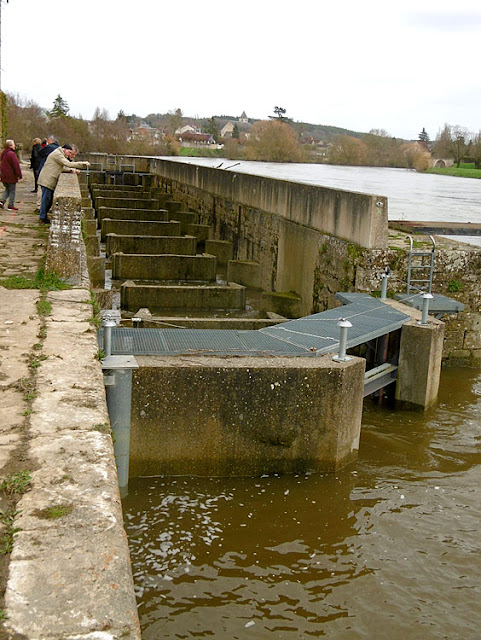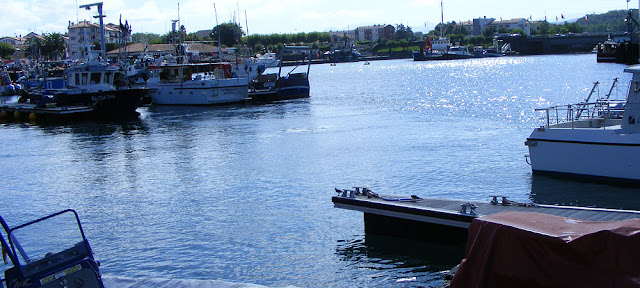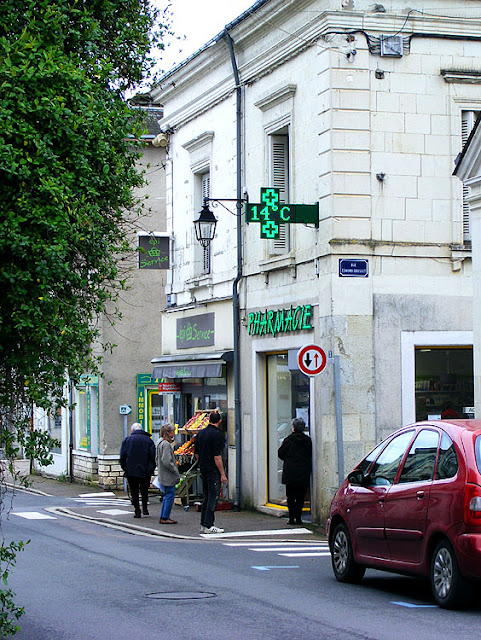We've been in lockdown for two weeks now and I'm struggling to find things to write about, so I've decided to pull a few things from the archives. This post originally appeared on 31 March 2014.
***************************************************
Friday 21 March was the International Day of Forests, and our local forest managers organised a walk lead by the head forester, Gérard Couturier. He had hosted a school trip that morning and was giving a lecture in the evening. He was quite open about the fact that his professional sphere was the production of timber, and he was not an expert on the birds and animals of the forest.
The Office National des Forêts (ONF) manages the Forest of Tours-Preuilly on behalf of its owner, the City of Tours, with the aim of reconciling the production of high quality timber, the preservation of natural surroundings and the countryside and the recreation needs of the public. The ONF is a public body dating back to Colbert's 17th century economic reforms in the reign of Louis XIV, and acts as a policy developer, consultant and law enforcer in all things forestry related in France, as well as hands on management of large swathes of the country. Although the City of Tours is the nominal owner, the forest is a long way from there and in fact, most maintenance and improvements (signage, barriers, etc) in the forest are funded by the Communauté des Communes de la Touraine du Sud (CCTS).
Gérard Couturier giving us some history before we start the walk.
The forest was left to the City of Tours in 1952 by the last private owner, Madame Hersent-Luzarche. She also left the family home, the chateau of Azay-le-Ferron to the city, and the area of land which became the Parc Animalier de Haute Touche to the National Museum of Natural History. The Luzarche family had acquired the estate in the aftermath of the Revolution. Prior to their ownership, the forest had been exploited for its reserves of iron ore, which were smelted and forged down on the Claise, using the power of the water to run mills and the wood from the forest to fuel furnaces.
It has taken 50 years of modern forestry practices to bring the forest to the generally good condition we see today. Azay le Ferron was not the Luzarches principle residence, and they viewed the forest as a private leisure park for hunting. They made no attempt to maintain the forest ecosystem in good condition.
A parcel that has had a couple of thinnings and now has chosen trees marked. These will be given a 12m clearing around them on the ground and allowed to grow to prime timber to be harvested at about 200 - 250 years old. These trees are Sessile Oak.
Consequently, at the time of the legacy, there were many 'empty' parcels of forest, requiring extensive 'cleaning' and replanting. That was stage one of the forest regeneration, and the aim was enable stage two ie to start producing saleable wood which could fund further maintenance. 300 hectares in all (one third of the forest) were replanted in this first stage. Stage 3, which was basically the regeneration of another third, finished last year. Stage 4 begins this year and is consolidating more complex and integrated management systems that began in Stage 3.
A total of 9 people, including Gérard, are responsible for managing the forest. No hunting is allowed except to control vermin, which means that they don't have the benefit of that potential income stream. However, Gérard is very firm that the forest is for everyone, and hunting is difficult to reconcile with other, more popular, leisure activities such as walking. Twice a year there are organised culls of big game, but otherwise the forest can be freely used by anyone at any time. He was asked if the deer population was a problem for the forest plantations and he said no, not as far as he could see, although he would like to have a pot of money to fund some research on their impact. He observed that the deer tended to concentrate on the edges of the forest.
Two of the foresters thin a young naturally regenerated parcel that is about 12 years old. The brush will be left on the ground to rot and replace nutrients in the soil.
At this point in the proceedings he told us a story about his colleague who manages the nearby Royal Forest of Loches. The ONF forests have simple wooden bar type barriers across any track they don't want vehicles to use. Apparently his colleague arrived at work one morning and discovered that every single barrier was missing, presumably stolen overnight. The barriers are milled timbers about 5m long and probably 15cm by 10cm in section, with a strip of green reflective plastic fixed to the middle. The whereabouts of these timbers was discovered not long after, by someone arriving at a house in Genillé after dark and noticing that a roof under construction on the property was glowing eerily in his headlights. The 'rafters' had been given away by their reflective strips and the police were called.
The commercial crop of trees is primarily oak, which is produced to the specifications of the timber industry. They want trees of a maximum of 85 cm diameter, and preferably 55 cm, which is cheaper to process. Any tree that has grown faster than 5mm per year in diameter will be rejected. Foresters have to consider whether they want bulk yields but low
margins, or restricted yields and high margins. Conifers are usually an
example of the former and need to yield 3000m³ / ha to be commercially
viable. Tree felling machines harvest about 140m³ / hour. The management
of a commercial plantation is a matrix of time, yield, timber industry
requirements, and the average price received by the forest is about
€25/m³. The best quality timber, from 3m lengths of trunk, will fetch €300/m³ and non lumber about €40/m³. The upper branches sell for €8/m³. Nowadays, over half of all timber produced in France comes from ONF sites.
Pruning the lower branches of young trees so they don't tangle.
The ONF aims to maintain a zero carbon footprint with its planting
and harvesting cycle, as well as considering the forest as a resource
for the future. The forest is managed so it is a mosaic, taking into consideration a mixture of mature commercial parcels, regenerating parcels, and parcels which will not be harvested, but left to mature naturally. Tree density and light penetration has to be managed to keep the trees in good condition. Trees chosen for timber production are ultimately given a 12m clear zone around them. At any one time these days they have 100ha in regeneration.
Parcels are regenerated naturally as far as possible, as planted parcels do not grow as vigorously, and are more fragile and less stable. Sometimes seed from uncommercial areas are used to augment entirely natural regeneration, and occasionally a parcel will be manually planted. Machines are not used to plant in the Forest of Preuilly as they compact the soil and have other disadvantages. Regenerated areas are now mixed species (hazel, hornbeam, chestnut and sessile oak dominating, with a bit of ash, beech, birch and aspen, along with some smaller species such as service tree, wild cherry, field maple and rowan). It is recognised that monocultures of oak do not thrive, especially if they follow a previous oak plantation on the same soil. A mixture of species ensures groups of trees are not all competing for the same micronutrients, and that the soil does not become exhausted after multiple generations of the same monoculture.
A Sessile Oak in its prime, about 200 - 240 years old.
Once the parcel is about 10 years old the foresters will move in and thin out the trees. The resulting brush is left piled on the ground to rot and feed the soil. After another 5 or 10 years more thinning takes place and trees are pruned to prevent lower branches from tangling with each other. This pruning is also the beginning of ensuring that trees can be felled cleanly and not break branches as they come down. The next stage is to mark certain trees with orange bands. These trees are the ones that have been chosen by the foresters and timber mills as the ones that will be harvested at around 250 years old, and over the years they are given more and more room to grow. Oak trees can live to a thousand years, but they become hollow inside and therefore valueless as timber if left too long. By the time they are ready it is hoped they will be worth three to four thousand euros each.
This mixed planting regime is a change from the planting schemes immediately following the Second World War and up until the 1970s. The great conifer forests of the Ardenne were badly damaged during the war and France was desperate for timber to rebuild, particularly in the mining industry. Consquently, the practice in the Forest then was to plant 10ha alternating parcels of conifers (Maritime Pine, Corsican Pine or Scots Pine) with Sessile Oak. The remnant conifer parcels are a disaster according to Gérard. The soil in these areas has been acidified to such an extent that he may not be able to plant broadleaf trees once the pines are removed. He's worried that the consultant ecologists will force him to bring in soil at great expense to reinstate the natural pH, rather than allow him to plant conifers again. On the other hand, conifers don't make any money and these acid soils lead to a proliferation of bracken and heather.
Other areas are left to gently age in a natural way. These are parcels which have proved uneconomical to harvest, and are now being reserved to provide tree seed, ensure biodiversity and create attractive leisure areas. Gérard is a staunch defender of Ivy, which is allowed to grow naturally and is not controlled or removed. He says it doesn't harm the trees, and protects and nourishes the birds, which in their turn, reduce the insect pests.
Climate change is providing a new challenge. Various cedar species and Downy Oak are being planted throughout France as a 'hedge' against climate change. Gérard predicted that Chestnut, Beech and Ash could disappear from the forest within the next 30 years, and Sessile Oak within the next 100, due to the increasingly dry summers. Already the natural distribution of these species is moving north, and it is not worth persisting with trees that will not thrive. He reminded everyone of how quickly Elm disappeared once Dutch Elm Disease struck and said it only took 2-3 days of hot dry weather to permanently damage a tree. On the other hand, he reported that Douglas Fir has already adapted to drier summers, and perhaps other species will too.
************************************************
For details of our private guided tours of chateaux, gardens, wineries, markets and more please visit the Loire Valley Time Travel website. We would be delighted to design a tour for you.
We are also on Instagram, so check us out to see a regularly updated selection of our very best photos.
We are also on Instagram, so check us out to see a regularly updated selection of our very best photos.












